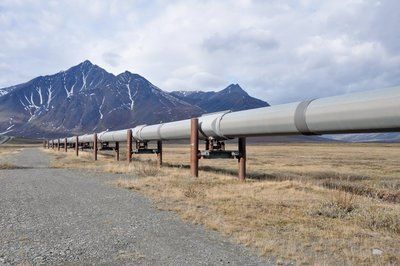Gas hydrates can cause many issues during drilling and production. Hydrates can cause equipment damage,
potentially hazardous issues, salt precipitation and other operational difficulties. To that end, drilling companies must eliminate the potential for gas hydrates wherever possible. Gas hydrates are more likely to occur depending on the mixture of the drilling fluids and the external temperatures surrounding the lines.
A practical first step towards avoiding gas hydrates is to ensure that all equipment is properly insulated. As gas hydrates can form at any location down the line, the entirety of the equipment should be inspected. Insulation at any area will still reduce the chances of gas hydrates forming, however, as it will reduce the overall cooling of the liquid. Of course, insulation alone can only do so much, so it is usually used either in conjunction with other methods or for areas with mild temperature extremes. For exceptionally cold environments, it's often better to rent a line heater.
A line heater will ensure that the temperatures remain steady regardless of the surrounding environment. Companies that do not often work in regions that would require line heating can rent a line heater rather than purchase it, which comes with the additional bonus of having the maintenance and repairs for the line heater already managed. A line heater is far more effective than insulation and also works very well with insulation.
Should hydrate plugs form regardless of protective attempts, they will usually need to be removed. Removal is often accomplished either through
solvent injections or chemical heating. Both of these options are thorough enough to completely remove the hydrate plug while being gentle enough to avoid damage to the equipment. Due to the nature and placement of hydrate plugs, it is almost never possible to remove them directly or manually. Alcohol and glycols are the most commonly used substances for solvent injection and hydrate plug removal.
Dehydration (the removal of water from the liquids) can eliminate the risk of hydrate formation. Hydrate formation will generally only occur in fluids that are more than 85% water. Reducing the water concentration will reduce or entirely remove the risk. Apart from dehydrating the solution, hydrophobic substances can also be used to coat the line and any other areas which come into contact with the liquids. Hydrophobic substances will stop hydrates from collecting in certain areas, and will thus reduce the optimal formation conditions.
Methanol, salts and other similar chemicals can be used to reduce the possibility of gas hydrates by altering the chemical makeup of the liquids and making hydrate collection less likely. Mixtures can also be used that will reduce hydrate forming compounds or discourage compounds forming entirely. This can be used either in conjunction with or in place of dehydration.
The chemical makeup of the liquid in addition to the temperature and pressure of the production environment will generally control the risk factors for hydrates. Companies wanting to avoid the potential for hydrate issues will want to carefully manage and monitor their drilling fluids while managing both the pressure and temperature of their lines and equipment. Hydrates are naturally occurring and can be extremely hazardous, especially in offshore drilling, if they are not properly protected against.











